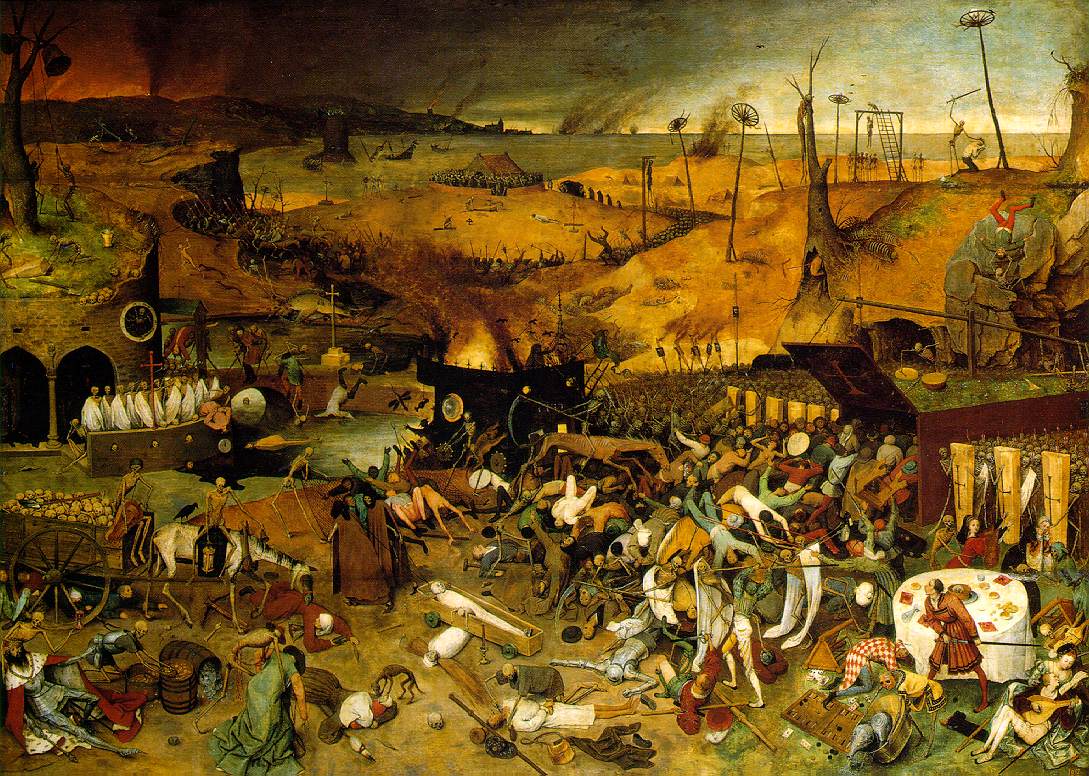Triumph of Death and The Future
7:00 AM |
| Pieter Bruegel the Elder, Triumph of Death, 1562 |
Who doesn’t love a good reminder of their own mortality?
Bruegel, in his Triumph of Death, illustrates humanity’s ever-present fear of death. We hold it off as long as we can but we inevitably succumb to its clutches. In this painting, death comes as an army of skeletons, as hellfire, as disease. It comes as human suffering, debauchery, and pain. The colors are sickly and striking. I can almost hear a dirge in the back of my mind.
Our lives go by too fast/ Nobody lives to see the future
I see destruction everywhere. Houses are being burned, fields slashed, lives lost. What little shreds of humanity were left are being carried away by a wagon of skulls. A choir of corpses sends the living off to Hell. Other than the crosses that are being carried or painted on coffins, there is a surprising lack of religious imagery. While religion still dominates the arts at this point, Bruegel has chosen to explore a different perspective. Unlike an altarpiece or religious painting, Bruegel’s work focuses on regular 15th century folks doing regular 15th century stuff. So although the Church may have influenced some of the most famous art of this time, Bruegel’s work can be thought of as a more honest representation of the lives and outlooks of the peasants.
Ain't got much faith in God or modern-day mythology/The lies and fables, fate, and luck directing everything
During this time, ideas about death and salvation were becoming very different. This explains why a painting by Bosch signifying death would look (and mean) nothing like a work by van der Weyden. The struggle to understand death and its purpose haunts this painting. No Christly figure has come down to save the condemned from their fates. Even Heaven is eclipsed by smoke and blackness. Why did these people deserve to perish in damnation? Did they live in corruption, reject religion, and surrender to evil? Maybe. But perhaps this painting isn’t just a narrative of the annihilation some base village. I see a materialization of fear -- Bruegel’s fear of dying inflicted upon innocent villagers. Although this manifestation of the unknown is far from comforting, at least Bruegel didn’t sugarcoat his fear of death and the unknown.
No heaven in the sky, no pearly gates on clouds and stuff.
I’ve often been asked why I like the song “The Future” by The Limousines. It’s not exactly enlightening or catchy. But it comforts me somehow; much like this painting probably comforted Bruegel. To put your fear on canvas and to let others view what has been haunting your mind in hopes that it resonates with them is therapeutic. That is not to say that looking at The Triumph of Death brings me inner peace, but it does provide an outlet for my own fears. Not a lot has changed in the past few centuries with regard to death and the “afterlife.” There is still no concise answer to the plethora of questions surrounding this topic.
But that’s okay.
0 comments